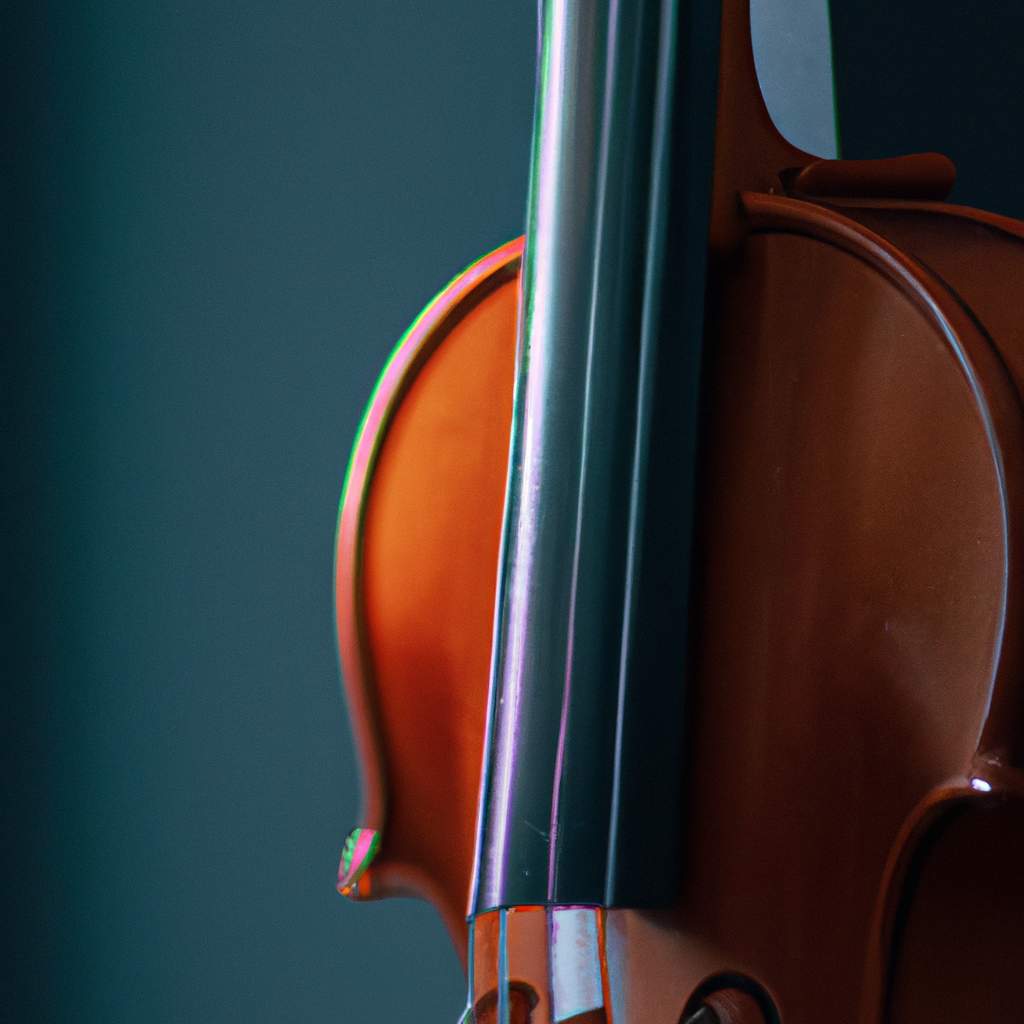
When starting their musical journey, beginners must understand the importance of choosing the right violin. The right instrument can greatly impact the learning experience and overall progress. It is crucial to consider various factors before making a decision, as this will ensure a fulfilling and enjoyable violin playing experience.

A violin consists of different parts that work together to produce beautiful music. Understanding the basics of a violin is essential for beginners:

Each part of the violin plays a crucial role in producing sound quality. Understanding these components will help beginners appreciate the instrument better and make an informed decision when choosing a violin.
There are different types of violins available in the market, each with its unique features and characteristics. Beginners should consider the following types:
Choosing the right type of violin depends on the beginner's preferences and needs. Acoustic violins are suitable for those seeking a traditional sound, while electric violins may offer more versatility and opportunities to explore different genres. Silent violins are ideal for practicing without disturbing others.
When choosing a beginner violin, there are several important considerations to keep in mind:
By considering size and weight, beginners can ensure a comfortable playing experience and reduce the risk of physical strain or discomfort.
One of the important factors to consider when choosing a beginner violin is the budget and pricing. Beginner violins can range in price, and it is essential to find a balance between quality and affordability.
While it is tempting to opt for the cheapest option available, it is important to remember that higher-quality violins tend to have better sound and durability. It is advisable to invest in a slightly more expensive violin to ensure a better playing experience and longer lifespan.
However, there are still affordable options available for beginners. It is recommended to explore different brands, compare prices, and read reviews to find a quality violin within a reasonable budget.
The quality and construction of a violin greatly impact its sound and longevity. When choosing a beginner violin, it is important to pay attention to the following aspects:
Paying attention to these factors will help beginners choose a violin with good quality and construction, ensuring a better sound and longer lifespan.
Sound quality is a crucial factor when choosing a violin. The sound produced by the instrument is influenced by various factors:
When choosing a beginner violin, it is important to evaluate the sound quality by playing different instruments and listening to the tone produced. Seek guidance from a professional violinist or teacher to ensure an informed decision.
It is highly beneficial for beginners to seek professional advice when choosing a beginner violin. Professional violinists or teachers can provide valuable insights based on their experience and expertise.
Consulting a professional can help beginners understand their specific needs, recommend suitable instruments, and guide them through the decision-making process. They can also assist with testing and evaluating different violins to ensure a good fit.
When seeking professional advice, it is important to find reliable sources. Look for reputable music schools, violin shops, or experienced violinists in the community.
Reading testimonials and reviews can provide helpful information when choosing a beginner violin. Hearing about others' experiences can offer insights and assist in making an informed decision.
When reading testimonials and reviews, it is important to consider multiple sources and look for unbiased opinions. Explore online forums, music websites, and social media groups dedicated to violin enthusiasts. Additionally, seek recommendations from trusted musicians or teachers.
Beginners often face the decision of whether to rent or purchase a beginner violin. Both options have their pros and cons:
Rental:
Purchasing:
When deciding between rental and purchasing, beginners should consider their goals, budget, and commitment level. Consulting with a professional can also provide valuable guidance.
Proper maintenance and upkeep are essential for a beginner violin's longevity and performance. Beginners should develop good care routines to keep their instrument in optimal condition:
Learning proper maintenance techniques is essential for beginners. Seek resources such as books, online tutorials, or guidance from a professional to ensure proper care and upkeep.
Beginners often have common questions when choosing a violin. Here are some frequently asked questions and detailed answers:
Q: What size violin should I choose as a beginner?
A: Beginner violin sizes range from 1/16 to 4/4. It is crucial to choose the appropriate size based on age and body measurements. Consult a professional or refer to size charts for guidance.
Q: How much should I spend on a beginner violin?
A: Beginner violins can range in price. It is important to find a balance between quality and affordability. Investing in a slightly more expensive violin can ensure better sound and durability.
Q: How can I test the sound quality of a violin?
A: To test the sound quality, play different instruments and listen to the tone produced. Seek guidance from a professional violinist or teacher to ensure an objective evaluation.
Q: Should I rent or purchase a beginner violin?
A: The decision between renting and purchasing depends on personal goals, budget, and commitment level. Consider factors such as long-term commitment and financial feasibility when making a decision.
Q: How often should I clean and tune my beginner violin?
A: Clean the violin regularly with a soft cloth and tune it as needed. Develop a routine to maintain the instrument's condition and playability.
Choosing the right beginner violin is of utmost importance for a fulfilling and enjoyable musical journey. By considering various factors such as size, budget, quality, sound, and seeking professional advice, beginners can make an informed decision.
Remember to carefully evaluate options, read reviews, and test different violins before making a final choice. With the right instrument in hand, beginners can embark on their violin playing adventure with confidence and enthusiasm.
Click here for more information on beginner violins.